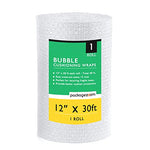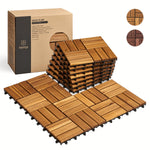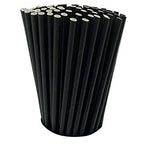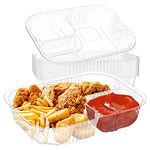You have no items in your shopping cart.
Are you looking for an eco-friendly solution to manage your garden waste? Look no further than pallet compost bins! These versatile and cost-effective containers are gaining popularity among gardening enthusiasts for their simplicity and effectiveness in composting organic matter. In this comprehensive guide, we'll delve into the world of pallet compost bins, exploring their benefits, how to build them, and tips for successful composting. Let's dive in and discover the wonders of pallet compost bins!
Table of Contents
- Introduction
- What are Pallet Compost Bins?
- Benefits of Pallet Compost Bins
- How to Build a Pallet Compost Bin
- Choosing the Right Location
- Selecting the Ideal Pallets
- Tools and Materials Needed
- Step-by-Step Construction Guide
- Maintaining and Turning the Compost
- Troubleshooting Common Issues
- Composting Dos and Don'ts
- Using Pallet Compost for Your Garden
- Understanding the Composting Process
- Composting FAQs
- What can I compost in a pallet compost bin?
- Can I use painted pallets for composting?
- How long does it take to get usable compost?
- Should I add worms to my pallet compost bin?
- How do I prevent odors in my compost?
- Can I compost kitchen scraps in a pallet compost bin?
- Tips for Successful Composting
- Alternative Uses for Pallets in the Garden
- Taking Composting to the Next Level
- Conclusion
1. Introduction
Gardening is a rewarding and fulfilling activity, but it often generates a significant amount of organic waste, including grass clippings, leaves, and vegetable scraps. This waste can be transformed into nutrient-rich compost, which benefits plants and helps reduce landfill waste. Pallet compost bins offer a practical and sustainable solution for turning your garden waste into "black gold" - a valuable soil amendment that nourishes plants and enhances overall garden health.
2. What are Pallet Compost Bins?
Pallet compost bins are DIY structures made from wooden pallets that provide a contained space for composting organic materials. They are designed to allow air circulation, moisture control, and the easy turning of compost, resulting in faster decomposition and the production of high-quality compost.
These bins are typically built using recycled or reclaimed wooden pallets, making them an environmentally friendly choice. By repurposing pallets that would otherwise end up in a landfill, you not only reduce waste but also minimize your carbon footprint.
3. Benefits of Pallet Compost Bins
Pallet compost bins offer several advantages over traditional composting methods. Here are some key benefits:
- Cost-Effective: Pallets are often available for free or at a minimal cost, making them an affordable option for building compost bins.
- Easy to Build: Constructing a pallet compost bin requires basic carpentry skills and minimal tools, making it accessible to beginners.
- Versatile: Pallets can be customized to suit various composting needs, such as size and design modifications.
- Good Air Circulation: The slatted design of pallets allows for adequate airflow, facilitating the decomposition process and reducing the risk of odors.
- Moisture Control: Pallets enable proper drainage, preventing waterlogging and promoting optimal moisture levels for composting.
- Easily Expandable: If you have more organic waste to compost, additional pallets can be added to increase the capacity of your compost bin.
4. How to Build a Pallet Compost Bin
Building a pallet compost bin is a straightforward process that requires a few basic tools and materials. Here's a step-by-step guide to help you get started:
Choosing the Right Location
The first step in building a pallet compost bin is selecting the ideal location in your garden. Consider the following factors:
- Sunlight Exposure: Choose an area that receives ample sunlight, as it helps speed up the composting process.
- Accessibility: Opt for a location that is easily accessible for adding and turning compost.
- Drainage: Ensure the area has good drainage to prevent waterlogging.
Selecting the Ideal Pallets
When selecting pallets for your compost bin, keep the following tips in mind:
- Choose Untreated Pallets: Avoid pallets treated with chemicals, as they can contaminate your compost.
- Look for Good Condition: Select pallets that are sturdy, in good condition, and free from rot or infestation.
- Standard Pallet Size: Opt for standard-sized pallets to ensure easy assembly and compatibility with other pallets.
Tools and Materials Needed
Before you start building your pallet compost bin, gather the following tools and materials:
- Hammer
- Nails or screws
- Saw
- Measuring tape
- Pallets (typically three for a basic compost bin)
- Optional: Wire mesh or landscape fabric (for lining the bin)
Step-by-Step Construction Guide
Follow these steps to build your pallet compost bin:
-
Measure and Plan: Determine the desired size and layout of your compost bin based on the available space and your composting needs.
-
Prepare Pallets: If necessary, dismantle any pallets that are larger than the desired size for your compost bin. Remove any protruding nails or screws.
-
Assemble the Base: Lay two pallets parallel to each other, ensuring the slats face inward. Attach them together using nails or screws.
-
Add the Back Panel: Attach the third pallet perpendicular to the base, using nails or screws to secure it to the other two pallets.
-
Secure the Corners: For added stability, use additional nails or screws to secure the corners of the compost bin.
-
Optional: Line the Bin: If you prefer, line the interior of the bin with wire mesh or landscape fabric to contain the compost better.
-
Place the Bin: Move the assembled bin to the chosen location in your garden.
Congratulations! You've successfully built your own pallet compost bin. Now, it's time to start composting and reaping the benefits for your garden.
5. Maintaining and Turning the Compost
Proper maintenance and regular turning of the compost are crucial for optimal decomposition. Here are some tips to keep your compost bin thriving:
- Monitor Moisture Levels: Check the moisture content regularly and add water if the compost appears too dry. Conversely, if it's too wet, mix in dry materials like leaves or shredded paper to improve aeration.
- Turn the Compost: Every few weeks, use a pitchfork or compost aerator to turn the compost. This helps aerate the pile and distributes microbes, accelerating decomposition.
- Add Browns and Greens: Maintain a balanced ratio of carbon-rich "browns" (e.g., dried leaves, straw) and nitrogen-rich "greens" (e.g., grass clippings, vegetable scraps) in your compost pile.
- Avoid Large Pieces: Chop or shred bulky materials to facilitate faster decomposition.
- Cover the Bin: Use a tarp or old carpet to cover the compost bin during heavy rain or extreme weather conditions.
By following these maintenance practices, you'll create an optimal environment for composting and achieve faster results.
6. Troubleshooting Common Issues
Composting can sometimes present challenges. Here are solutions to common problems you may encounter:
- Foul Odors: Ensure the compost is properly aerated and contains the correct balance of browns and greens. Adding more browns can help neutralize odors.
- Pests and Critters: Avoid adding meat, dairy, or oily items to the compost, as they can attract pests. If critters are a persistent issue, consider securing the bin with wire mesh.
- Slow Decomposition: Assess the carbon-to-nitrogen ratio (C/N) of your compost. Adjust the ratio by adding more greens (nitrogen) or browns (carbon) as needed.
- Excessive Moisture: Check for proper drainage in the bin and adjust the moisture content by adding dry materials to absorb excess moisture.
- Compost Not Heating Up: Ensure the compost contains a balanced mix of greens and browns. If necessary, add nitrogen-rich materials like grass clippings or coffee grounds to increase the temperature.
By troubleshooting these issues, you'll overcome common composting challenges and maintain a healthy compost pile.
7. Composting Dos and Don'ts
To ensure successful composting, keep these dos and don'ts in mind:
Dos:
- Do use a variety of organic materials, including fruit and vegetable scraps, coffee grounds, leaves, and garden trimmings.
- Do chop or shred large materials into smaller pieces for faster decomposition.
- Do turn the compost regularly to promote aeration and even decomposition.
- Do monitor moisture levels and adjust as needed to maintain optimal conditions.
- Do cover the compost bin during heavy rain or extreme weather to prevent excessive moisture.
Don'ts:
- Don't add meat, dairy, oily food, or pet waste to the compost, as they can attract pests and cause odors.
- Don't add weeds with mature seeds, as they may survive the composting process and reinfest your garden.
- Don't add diseased plants, as some pathogens may survive the composting process and spread to healthy plants.
- Don't use treated wood pallets or materials treated with chemicals, as they can contaminate the compost.
- Don't neglect to monitor and adjust the composting process regularly.
By adhering to these dos and don'ts, you'll ensure successful composting and produce nutrient-rich compost for your garden.
8. Using Pallet Compost for Your Garden
Once your compost has transformed into rich, dark, crumbly soil, it's time to put it to use in your garden. Here are some tips for using pallet compost effectively:
- Soil Amendment: Mix compost into your garden soil to improve its structure, fertility, and moisture retention capabilities.
- Top Dressing: Apply compost as a top dressing around plants, trees, and shrubs to provide a slow-release source of nutrients.
- Mulching: Spread compost as a protective mulch layer around plants to suppress weeds, conserve moisture, and insulate plant roots.
- Potting Mix: Create a nutrient-rich potting mix by blending compost with other organic materials like peat moss and perlite.
- Compost Tea: Brew compost tea by steeping compost in water to create a nutrient-rich liquid fertilizer for plants.
By incorporating compost into your gardening practices, you'll enrich your soil, promote plant growth, and contribute to a sustainable gardening ecosystem.
9. Understanding the Composting Process
Composting is a natural process that involves the breakdown of organic materials into stable, nutrient-rich humus. Here's a simplified overview of the composting process:
-
Phase 1: Mesophilic Stage: Microorganisms, such as bacteria and fungi, begin breaking down the readily available sugars and starches in the compost pile. Temperature rises moderately.
-
Phase 2: Thermophilic Stage: Thermophilic bacteria become dominant, raising the internal temperature of the compost pile. This stage is characterized by accelerated decomposition and the breakdown of complex organic compounds.
-
Phase 3: Maturation Stage: As the compost cools down, mesophilic bacteria and other decomposers continue breaking down organic matter, creating stable humus.
The composting process typically takes several weeks to several months, depending on factors like temperature, moisture, and the carbon-to-nitrogen ratio. Regular turning, proper moisture management, and maintaining the correct balance of organic materials contribute to faster and more efficient decomposition.
10. Composting FAQs
Q: What can I compost in a pallet compost bin? A: You can compost a wide range of organic materials, including fruit and vegetable scraps, coffee grounds, tea bags, eggshells, leaves, grass clippings, and garden trimmings. Avoid adding meat, dairy, oily foods, and pet waste.
Q: Can I use painted pallets for composting? A: It's best to avoid using painted pallets for composting, as the paint may contain chemicals that can leach into the compost. Stick to untreated pallets for a safe and eco-friendly option.
Q: How long does it take to get usable compost? A: The composting process can take anywhere from a few months to a year, depending on various factors such as temperature, moisture, and the carbon-to-nitrogen ratio. Regular turning and optimal conditions can speed up the process.
Q: Should I add worms to my pallet compost bin? A: While not necessary, adding worms, such as red wigglers or Eisenia fetida, can enhance the composting process. Worms help break down organic matter faster and create nutrient-rich vermicompost.
Q: How do I prevent odors in my compost? A: To prevent odors, ensure proper aeration and moisture control in the compost bin. Add more browns (carbon-rich materials) and avoid adding meat, dairy, or oily items that can cause unpleasant smells.
Q: Can I compost kitchen scraps in a pallet compost bin? A: Yes, kitchen scraps like fruit and vegetable peels, coffee grounds, and eggshells are excellent additions to a pallet compost bin. Just avoid adding meat, dairy, and oily foods.
11. Tips for Successful Composting
To optimize your composting experience, consider the following tips:
- Balance Carbon and Nitrogen: Maintain a ratio of roughly 25-30 parts carbon (browns) to 1 part nitrogen (greens) to provide the ideal environment for decomposition.
- Shred or Chop Materials: Smaller pieces decompose faster, so shred or chop large materials like branches or cornstalks before adding them to the compost.
- Layer Greens and Browns: Alternate layers of green and brown materials to promote a well-balanced compost pile.
- Aerate Regularly: Turn the compost every few weeks to ensure proper airflow and even decomposition.
- Monitor Moisture: Keep the compost moist, like a wrung-out sponge, to facilitate microbial activity. If it gets too dry, add water, and if too wet, add dry materials.
- Add Compost Activators: Use compost activators, such as finished compost or commercial compost starters, to speed up the decomposition process.
By implementing these tips, you'll optimize your composting efforts and achieve faster and more efficient results.
12. Alternative Uses for Pallets in the Garden
Pallets offer endless possibilities beyond compost bins. Here are some alternative uses for pallets in your garden:
- Vertical Gardens: Create a vertical garden by attaching potted plants or planters to the pallet's slats.
- Potting Benches: Build a potting bench using pallets as the base, providing a convenient workspace for gardening tasks.
- Planters and Raised Beds: Construct raised garden beds or planters using pallets, allowing for easy organization and separation of different plants.
- Tool Storage: Use pallets to create storage racks for garden tools, ensuring they are easily accessible and organized.
- Decorative Structures: Design and build garden structures like trellises, arbors, or fences using pallets, adding a rustic and unique touch to your garden.
With a little creativity, pallets can be repurposed into functional and aesthetically pleasing elements in your garden.
13. Taking Composting to the Next Level
If you're eager to expand your composting knowledge and practices, consider the following advanced techniques:
- Vermicomposting: Introduce worms into your compost pile to accelerate decomposition and produce nutrient-rich vermicompost.
- Compost Tea: Brew compost tea by steeping compost in water. Use this nutrient-rich liquid as a foliar spray or soil drench to nourish plants.
- Bokashi Composting: Explore bokashi composting, a fermentation process that allows you to compost a wider range of materials, including meat and dairy, using beneficial microorganisms.
- Composting with Biochar: Incorporate biochar, a type of charcoal, into your compost pile to enhance nutrient retention and soil structure.
- Compost Sifting: Use a compost sifter or screen to separate finished compost from larger, unfinished materials, creating a fine and consistent product.
By exploring these advanced composting techniques, you can further refine your composting skills and achieve even greater results for your garden.
14. Conclusion
Pallet compost bins are an excellent addition to any sustainable gardener's toolkit. With their affordability, versatility, and eco-friendly nature, these bins provide an accessible solution for managing garden waste and creating nutrient-rich compost. By following the steps outlined in this guide, you can build your own pallet compost bin, maintain it effectively, troubleshoot common issues, and use the resulting compost to enhance your garden's health and productivity. Start your composting journey today and contribute to a greener and more sustainable future!








